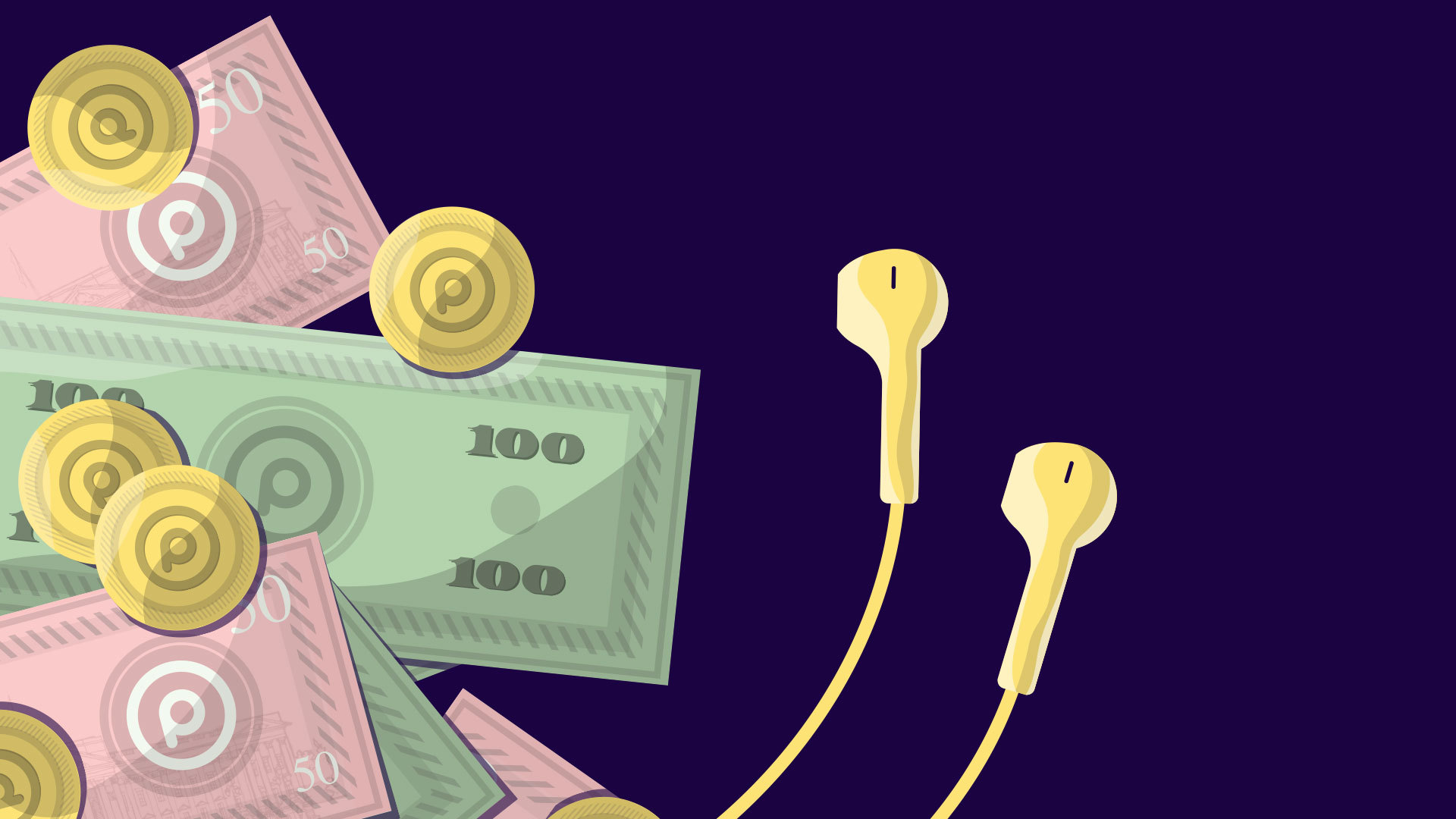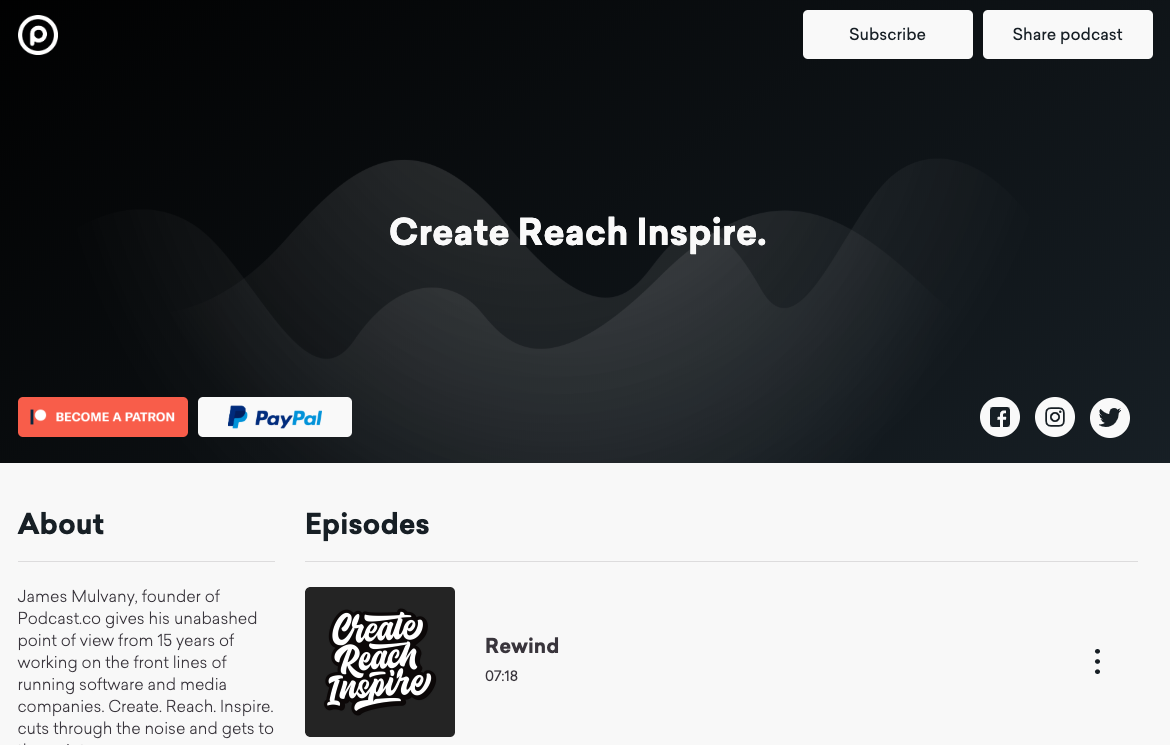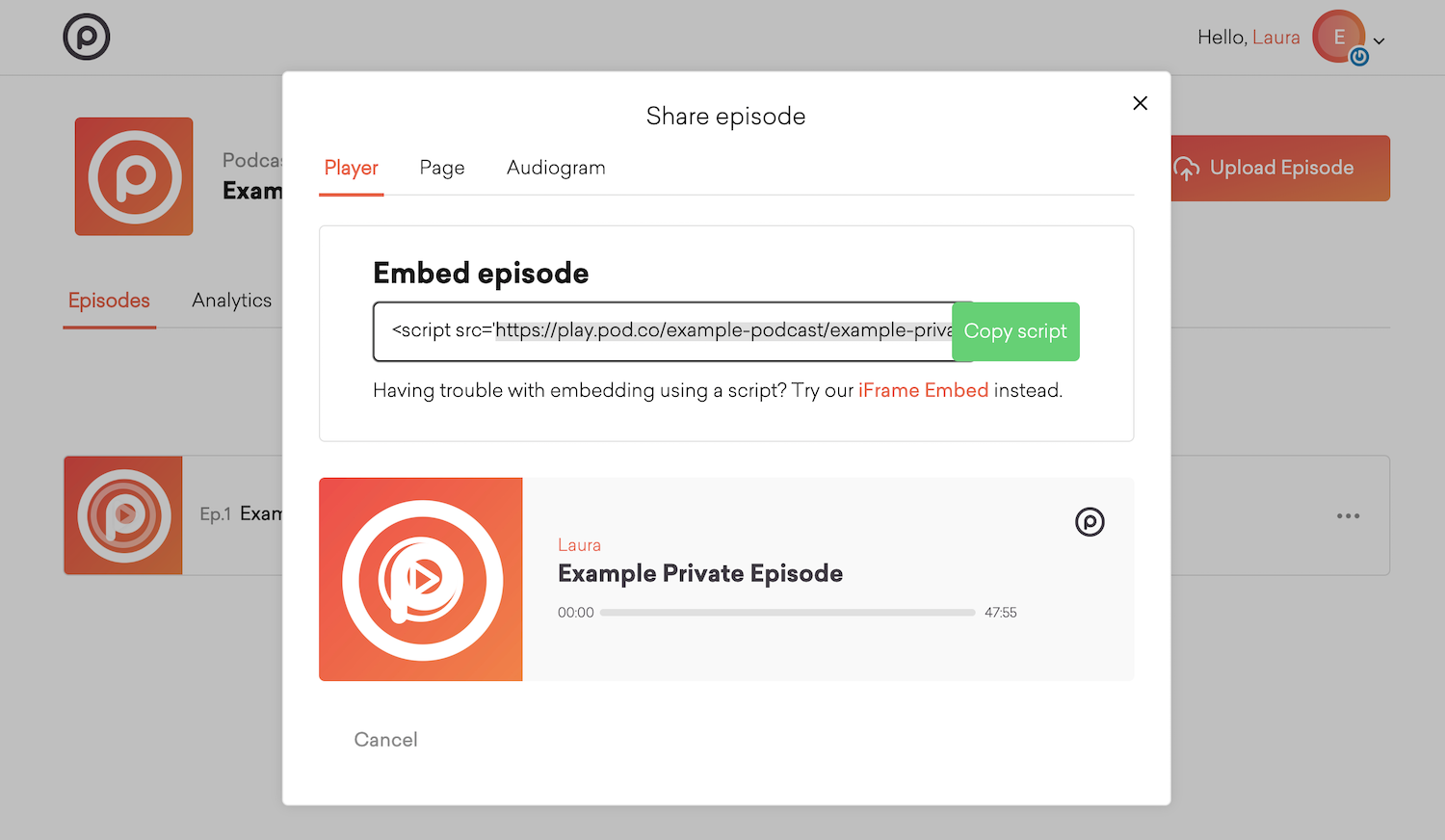Creating premium podcast content is a proven and effective way to monetize your show. The logic is straightforward. Produce more great content your listeners would love to hear, but don’t give it away for free.
Most of the highest earning podcasts on Patreon have used this model to make their show financially successful. For example, the political comedy podcast Chapo Trap House has more than 30,000 Patreon donors and brings in $144,000 every month.
They incentivise donations by publishing two new episodes each week, a free one and another only available to those who give $5 per month. Simple.
Clearly this approach works. So in this article we’ll explore what premium content is, the different forms it can take, pricing, and how to encourage donations. In addition, we’ll also outline how you can use Podcast.co to deliver premium content.
What is Premium Podcast Content?
In podcasting, premium content is an extra episode that isn’t available in your normal podcast feed. Listeners have to pay to access it.
So it makes sense to position it in a way that makes it stand out from your normal content. If your premium content isn’t differentiated from what listeners can get for free, they’ll be less likely to buy it.
As a method of monetisation, offering premium content stands in contrast to traditional sponsorship. Even though podcast ads can be entertaining, some producers don't feel comfortable including them in their show. So they prefer to monetise in a way that feels like they’re adding value by delivering more great content.
Different Types of Premium Content
Premium content can be differentiated in many different ways. But most podcasters tend to go with tried and tested options, such as:
Part 1 & Part 2
Publishing the first part of a conversation or lesson to the normal podcast feed, then offering the second part as follow-up premium content. This can work well for interviews with well-known guests or lessons that cover particularly important topics.
Audience Engagement
Creating premium content that makes the audience feel a part of the podcast. This is commonly done by hosts publishing premium ‘Ask Me Anything’ episodes where they answer questions from paying supporters only. Paying supporters may also be given the ability to submit questions for guests or suggest future episode topics.

Behind the Scenes
Creating premium content that gives listeners insider access to all the preparation and work that goes on to create the episodes in the normal feed.
Video
Every episode is available for free as audio-only but supporters also have access to premium video episodes. This works particularly well for educational and informative content where the learning process can be greatly aided through visual explanation, diagrams, and screencaptures.
It’s up to you to decide which type of premium content will work best for your show. Try to put yourself in the shoes of your listeners and imagine which option would seem most enticing.
When to Offer Premium Podcast Content
If you are just starting your podcast and haven’t got much of an audience yet, it’s probably best to hold off on creating premium content. It should only really be considered if you have an existing audience who are quite engaged. Otherwise you’ll just be creating lots of unnecessary work for yourself.
Loyal fans are those most likely to become supporters. And that loyalty has to be earned by delivering value on a consistent basis for free first. But once you’ve got a base of listeners who love what you do, many of them will be eager to hear more content from you. When the demand is there, it makes sense to invest some time creating premium content.
Publishing Frequency
More content means more time spent creating it. And it likely already takes a lot of work to put your normal episodes together. So you need to make sure you can manage the extra workload.
You don’t need to promise your paying listeners the moon and stars. But you do need to make sure they feel they’re getting value for money. So as a minimum, the frequency you publish premium content needs to match your membership plan.

If you are asking listeners to give a monthly donation, then you should aim to publish at least one new piece of premium podcast content every month. This usually isn’t too difficult to achieve.
For example, ‘Ask Me Anything’ premium content is simple and easy to put together. Simply create a closed or secret Facebook group for your paying listeners, encourage them to submit questions, then get behind the mic and answer the best ones.
But keep in mind that the more premium content you offer, the greater the incentive for your fans to become paying supporters. So work out how much time you can feasibly set aside for creating premium content each month, and then come up with an offering based on that.
How Much Should you Charge?
When it comes to subscription fees, less is more. No matter how great your premium content is, if you try to charge $100 per month for it, nobody is going to buy it. It’s too big of a commitment.
You want to set a price that is a low barrier to entry for listeners so they can easily support you. If you set the bar too high you’ll put even your most loyal fans off.
Creating premium content is a long term strategy. It’s not about quick wins. The goal is to slowly grow your number of supporters over the course of months and years. That will give you the best return over time.

Charging $5 per month for premium content has now become standard practice in the industry. If you can say to your listeners ‘For the price of one cup of coffee each month, you can get access to X, Y, and Z’ that’s very appealing. They’re more likely to say yes. At that level, with just 200 supporters, you’ll be making $1000 per month from your podcast. Not bad!
Encouraging Financial Support
When promoting your premium content in your normal podcast episodes, you should make it clear exactly where the money is going. If you are putting money towards things like covering your podcasting expenses, paying for hosting, or travelling to interview guests then let your listeners know.
To encourage support, you need to make people feel as if they are a part of your journey. This is especially true if you are a solo podcaster. If you let people know how they’ll be helping you out by becoming a supporter, they’ll be more likely to do so. Otherwise they may simply assume the money is going straight in your back pocket.
Peter Attia, host of The Drive, a podcast all about longevity, begins each episode with a call to action encouraging listeners to become supporters. It’s one of the best examples out there in terms of promoting premium podcast content:
Instead of selling ads I’ve decided to go with what a handful of others have proven can work over time and that is to create a subscriber model for my audience. This helps cover the costs of running the show and keeps my relationship with you simple and honest. If you value you what I’m doing, you can become a member. In exchange, you'll get the benefits above and beyond what’s available for free. It’s that simple.
It’s my goal to ensure that no matter what level you choose to support us at, you will get back more than you give. Members will receive full access to the exclusive show notes complete with diagrams. These are useful beyond the podcast especially given the technical nature of some of our shows. Members also get exclusive access to listen to and participate in the regular AMA episodes where I answer your questions.
The key is to be open and transparent with your listeners. That way, listeners will view the membership fee as a way of giving back for the value you’ve given them in the past.
Using Podcast.co to Share Premium Content
So if you want to offer listeners premium podcast content, here’s how you can do it with Podcast.co. The process is simple:
Step 1: Add Donation Buttons to Your Podcast Page
First you need to make it easy for listeners to donate to your show. With Podcast.co you can add buttons to your podcast page to accept donations through either Patreon or Paypal (or both). To add a donation button to your podcast page, simply create an account on one of the platforms. With your account set up, just copy and paste your donation URL into Podcast.co. 100% of all donations will go directly to you, we don’t charge any fees.

The buttons will then be visible on the bottom right of your podcast page header.

Step 2: Create a New Email List for Paying Supporters
With the buttons set up you’ll then need to create a new email list exclusively for donating listeners. If you aren’t using an email marketing service like Mailchimp, this can also be easily done in Outlook or Gmail. This list is what you’ll use to deliver premium content to your listeners.
Step 3: Upload Your Premium Content
Upload your premium episode by clicking ‘Upload Episode’ or by dragging and dropping your audio file into the window. Fill in your episode details as normal, but when you get to the Publish drop-down menu, select Unlisted rather than Published. This means the episode will not appear in your main RSS feed, so it won’t be available on free directories like Apple Podcasts and Spotify.
Step 4: Share Your Content
The final step in the process is to share your premium content with your donating listeners. To do so, select the Share Episode button on the right hand side. This will open up a new window showing an embed code for the episode. Then extract the URL from the code. It should look something like this:

Now all you need to do is to email the URL to your list of donating listeners, announcing what the can expect from the content. When your listeners click the URL, it will take them directly to a private player so they can hear the episode.









